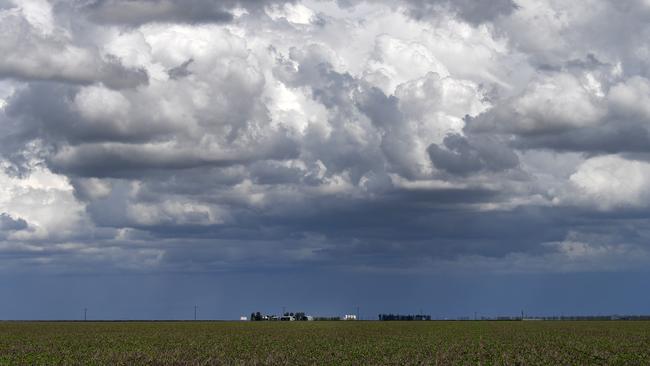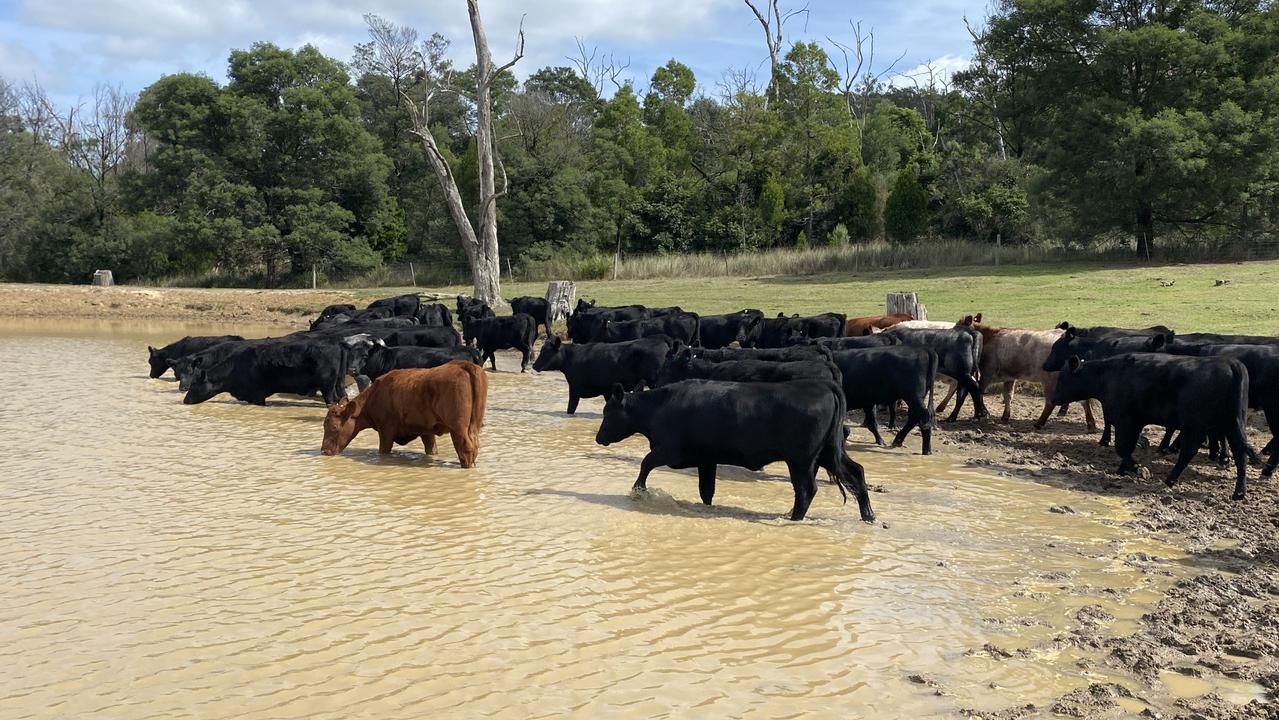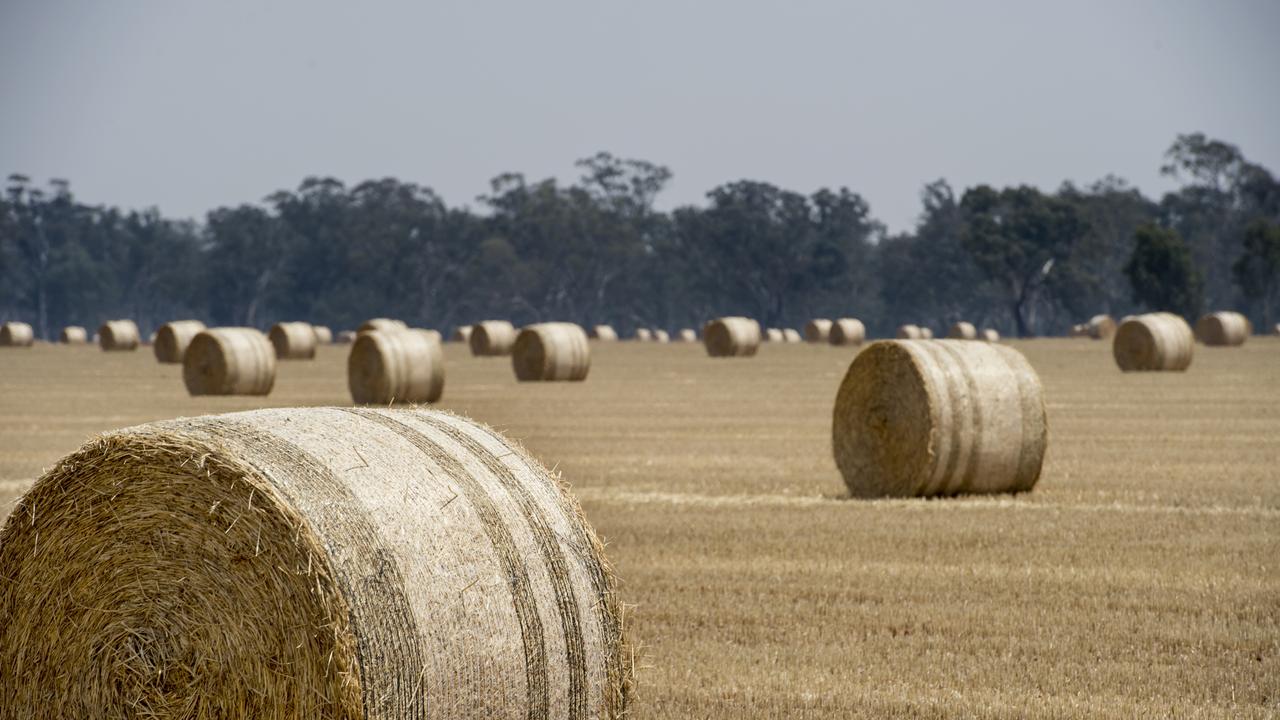Where has the most rain fallen in southeast Australia in 2021
Some parts of southeast Australia have received a year’s worth of rain within six months, while others missed out completely. See how your town fares against our list of 170.

NSW is leading the charge when it comes to rainfall in 2021 as parts of South Australia and Victoria lag considerably behind, an analysis of 170 weather stations has shown.
The analysis shows that while 11 of the monitored Bureau of Meteorology stations in Victoria, NSW, southern Queensland and South Australia’s South East have already eclipsed their average annual rainfall totals, with more than five months of the year remaining, several centres have struggled to record a third of their average rain.
The best rain of the year has been in the major cropping regions of central and northern NSW, which are on track for their second bumper harvest in a row. In central-west and northern NSW, Forbes (632mm), West Wyalong (544mm), Condobolin (491mm), Trangie (512mm) and Walgett (418mm) have also surpassed their calendar-year averages within just six-and-a-half months while a number of centres including Narrabri (531mm), Dubbo (543mm), Warialda (663mm), Moree (527mm) and Temora (488mm) are expected to join them with forecast rain in the coming weeks.
The wettest centre in southern Queensland, relative to its long-term average, is Texas with 665mm equalling 102 per cent of its long-term 12-month average. In Victoria, the best falls have been in South Gippsland with Yarram’s 560mm equating to 77 per cent of its annual average. Strathalbyn has proven South Australia’s best performer with 254mm accounting for 61 per cent of its 12-month average.
Centres that have so far recorded less than a third of their annual totals include Morgan (70mm), Loxton (66mm), Renmark (61mm), Karoonda (93mm) and Port Augusta (62mm) in South Australia, Swan Hill (87mm), Ouyen (99mm), Hopetoun (90mm) and Birchip (111mm) in Victoria, and Monto (219mm) in Queensland.
WETTEST CENTRES OF 2021 TO DATE VERSUS LONG-TERM AVERAGE
1. Forbes, NSW – 632mm (132 per cent of its annual average)
2. Taree, NSW – 1404mm (129 per cent)
3. West Wyalong, NSW – 544mm (126 per cent)
4. Condobolin, NSW – 491mm (122 per cent)
5. Tibooburra, NSW – 215mm (119 per cent)
6. Bega, NSW – 735mm (117 per cent)
7. Mt Hope, NSW – 410mm (107 per cent)
8. Trangie, NSW – 512mm (104 per cent)
9. Texas, QLD – 665mm (102 per cent)
10. Braidwood, NSW – 633mm (101 per cent)
11. Walgett, NSW – 418mm (101 per cent)
12. Ivanhoe, NSW – 232mm (99 per cent)
13. Narrabri, NSW – 531mm (98 per cent)
14. Dubbo, NSW – 543mm (98 per cent)
15. Warialda, NSW – 663mm (97 per cent)
16. Grafton, NSW – 954mm (97 per cent)
17. Inverell, NSW – 741mm (96 per cent)
18. Glen Innes, NSW – 825mm (95 per cent)
19. Lake Cargelligo, NSW – 394mm (95 per cent)
20. Moree, NSW – 527mm (95 per cent)
21. Temora, NSW – 488mm (93 per cent)
22. Pilliga, NSW – 512mm (93 per cent)
23. Coonabarabran, NSW – 593mm (92 per cent)
24. Mungindi, NSW – 460mm (92 per cent)
25. Warwick, QLD – 628mm (91 per cent)
26. Cobar, NSW – 294mm (89 per cent)
27. Nowra, NSW – 771mm (88 per cent)
28. Young, NSW – 519mm (88 per cent)
29. Grenfell, NSW – 545mm (88 per cent)
30. Goulburn, NSW – 463mm (87 per cent)
31. Bombala, NSW – 480mm (87 per cent)
32. Cootamundra, NSW – 499mm (87 per cent)
33. Bourke, NSW – 254mm (86 per cent)
34. Moss Vale, NSW – 582mm (86 per cent)
35. Orange, NSW – 754mm (86 per cent)
36. Gunnedah, NSW – 446mm (85 per cent)
37. Hillston, NSW – 311mm (84 per cent)
38. Lismore, NSW – 978mm (84 per cent)
39. Tamworth, NSW – 518mm (84 per cent)
40. Barraba, NSW – 575mm (84 per cent)
41. Brisbane, QLD – 837mm (82 per cent)
42. Collarenebri, NSW – 406mm (82 per cent)
43. Miles, QLD – 430mm (82 per cent)
44. Coonamble, NSW – 423mm (81 per cent)
45. Scone, NSW – 479mm (81 per cent)
46. Dunedoo, NSW – 491mm (81 per cent)
47. Narrandera, NSW – 341mm (79 per cent)
48. Casino, NSW – 809mm (78 per cent)
49. Taralga, NSW – 627mm (78 per cent)
50. Cowra, NSW – 496mm (78 per cent)
51. Yarram, VIC – 560mm (77 per cent)
52. Peak Hill, NSW – 432mm (77 per cent)
53. Mitchell, QLD – 437mm (77 per cent)
54. Mudgee, NSW – 492mm (76 per cent)
55. Wagga Wagga, NSW – 432mm (76 per cent)
56. Dorrigo, NSW – 1410mm (76 per cent)
57. Cooma, NSW – 396mm (75 per cent)
58. Canberra, ACT – 433mm (74 per cent)
59. Tenterfield, NSW – 626mm (74 per cent)
60. Bathurst, NSW – 440mm (74 per cent)
61. Gabo Island, VIC – 687mm (73 per cent)
62. Guyra, NSW – 648mm (72 per cent)
63. Murrurundi, NSW – 599mm (72 per cent)
64. Albury, NSW – 436mm (72 per cent)
65. Parkes, NSW – 447mm (72 per cent)
66. Wellington, NSW – 438mm (71 per cent)
67. Maitland, NSW – 585mm (71 per cent)
68. Applethorpe, QLD – 530mm (71 per cent)
69. Dalby, QLD – 413mm (70 per cent)
70. Yarrawonga, VIC – 324mm (70 per cent)
71. Toowoomba, QLD – 491mm (70 per cent)
72. Gelantipy, VIC – 543mm (70 per cent)
73. Armidale, NSW – 517mm (70 per cent)
74. Oberon, NSW – 580mm (69 per cent)
75. Omeo, – 442mm (69 per cent)
76. Stawell, VIC – 323mm (69 per cent)
77. Thargomindah, QLD – 183mm (69 per cent)
78. Sale, VIC – 404mm (69 per cent)
79. Wilcannia, NSW – 179mm (68 per cent)
80. Griffith, NSW – 267mm (68 per cent)
81. Surat, QLD – 385mm (67 per cent)
82. Woolbrook, NSW – 516mm (67 per cent)
83. Bendigo, VIC – 336mm (67 per cent)
84. Sydney, NSW – 807mm (67 per cent)
85. Merriwa, NSW – 413mm (67 per cent)
86. Tocumwal, NSW – 297mm (66 per cent)
87. Stanthorpe, QLD – 504mm (66 per cent)
88. Biloela, QLD – 386mm (66 per cent)
89. Bairnsdale, VIC – 417mm (65 per cent)
90. Gatton, QLD – 501mm (65 per cent)
91. Deniliquin, NSW – 233mm (65 per cent)
92. Westmere, VIC – 378mm (65 per cent)
93. Warrnambool, VIC – 469mm (65 per cent)
94. Cunnamulla, QLD – 239mm (64 per cent)
95. Ararat, VIC – 369mm (63 per cent)
96. Roma, QLD – 352mm (63 per cent)
97. Barcaldine, QLD – 311mm (62 per cent)
98. Ballarat, VIC – 422mm (61 per cent)
99. Strathalbyn, SA – 254mm (61 per cent)
100. Tumbarumba, NSW – 592mm (61 per cent)
101. Portland, VIC – 506mm (60 per cent)
102. St George, QLD – 275mm (60 per cent)
103. Mortlake, VIC – 341mm (59 per cent)
104. Menindee, NSW – 140mm (58 per cent)
105. Rutherglen, VIC – 334mm (57 per cent)
106. Meningie, SA – 268mm (57 per cent)
107. Redesdale, VIC – 330mm (57 per cent)
108. Lithgow, NSW – 491mm (57 per cent)
109. Taroom, QLD – 379mm (57 per cent)
110. Tambo, QLD – 302mm (57 per cent)
111. Avalon, VIC – 257mm (57 per cent)
112. Castlemaine, VIC – 331mm (57 per cent)
113. Wangaratta, VIC – 341mm (56 per cent)
114. Latrobe Valley, VIC – 407mm (56 per cent)
115. Kingscote, SA – 244mm (55 per cent)
116. Cummins, SA – 231mm (55 per cent)
117. Mt Barker, SA – 416mm (54 per cent)
118. Nambour, QLD – 933mm (54 per cent)
119. Mt Gambier, SA – 388mm (54 per cent)
120. Lake Eildon, VIC – 457mm (54 per cent)
121. White Cliffs, NSW – 135mm (54 per cent)
122. Shepparton, VIC – 232mm (53 per cent)
123. Longreach, QLD – 222mm (51 per cent)
124. Blackall, QLD – 235mm (50 per cent)
125. Benalla, VIC – 334mm (50 per cent)
126. Horsham, VIC – 181mm (50 per cent)
127. Hamilton, VIC – 303mm (49 per cent)
128. Adelaide, SA – 216mm (49 per cent)
129. Melbourne, VIC – 317mm (49 per cent)
130. Edithburgh, SA – 182mm (48 per cent)
131. Geelong, VIC – 252mm (48 per cent)
132. Charlton, VIC – 201mm (48 per cent)
133. Keith, SA – 217mm (47 per cent)
134. Springsure, QLD – 321mm (47 per cent)
135. Casterton, VIC – 303mm (47 per cent)
136. Cleve, SA – 162mm (46 per cent)
137. Balranald, NSW – 148mm (46 per cent)
138. Warracknabeal, VIC – 178mm (46 per cent)
139. Kingston SE, SA – 265mm (46 per cent)
140. Echuca, VIC – 187mm (44 per cent)
141. Murray Bridge, SA – 152mm (44 per cent)
142. Charleville, QLD – 209mm (43 per cent)
143. Wycheproof, VIC – 161mm (42 per cent)
144. Naracoorte, SA – 205mm (42 per cent)
145. Rolleston, QLD – 269mm (42 per cent)
146. Lameroo, SA – 128mm (42 per cent)
147. Eudunda, SA – 185mm (41 per cent)
148. Coonawarra, SA – 229mm (41 per cent)
149. Kerang, VIC – 148mm (40 per cent)
150. Nhill, VIC – 132mm (40 per cent)
151. Clare, SA – 211mm (39 per cent)
152. Longerenong, VIC – 161mm (39 per cent)
153. Edenhope, VIC – 228mm (37 per cent)
154. Broken Hill, NSW – 90mm (36 per cent)
155. Mildura, VIC – 103mm (36 per cent)
156. Birdsville, QLD – 47mm (36 per cent)
157. Emerald, QLD – 191mm (35 per cent)
158. Hay, NSW – 126mm (34 per cent)
159. Rockhampton, QLD – 279mm (34 per cent)
160. Bundaberg, QLD – 344mm (34 per cent)
161. Birchip, VIC – 111mm (32 per cent)
162. Hopetoun, VIC – 90mm (31 per cent)
163. Ouyen, VIC – 99mm (30 per cent)
164. Monto, QLD – 219mm (30 per cent)
165. Port Augusta, SA – 62mm (30 per cent)
166. Swan Hill, VIC – 87mm (29 per cent)
167. Karoonda, SA – 93mm (27 per cent)
168. Renmark, SA – 61mm (26 per cent)
169. Loxton, SA – 66mm (26 per cent)
170. Morgan, SA – 70mm (26 per cent)
MORE
ACTIVIST BANK ACCUSED OF BREAKING RULES OVER RED-MEAT BOYCOTT



